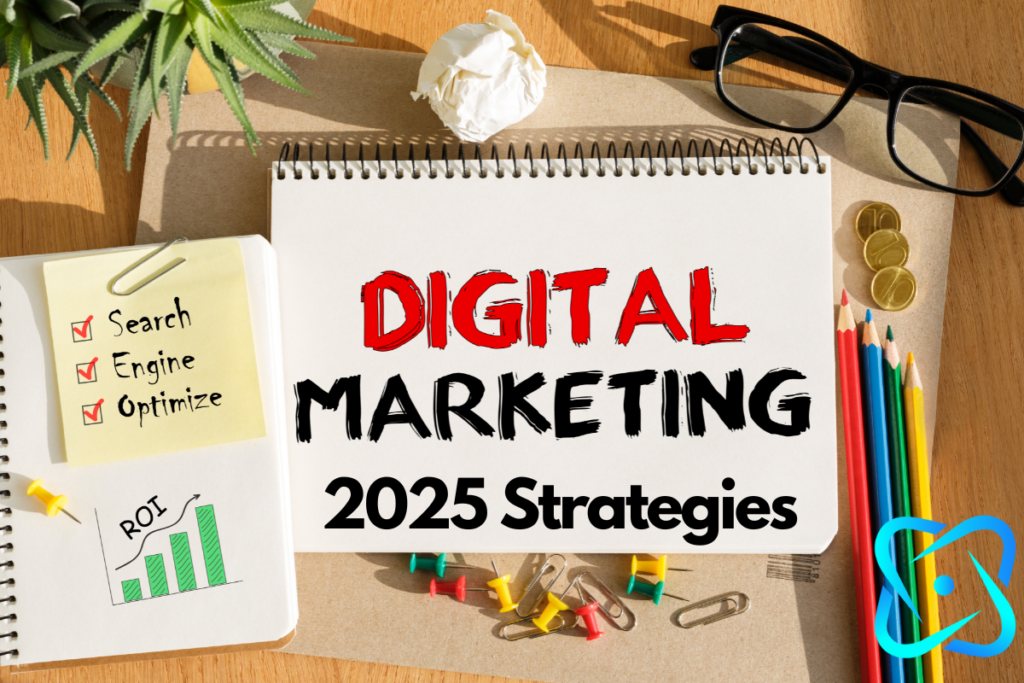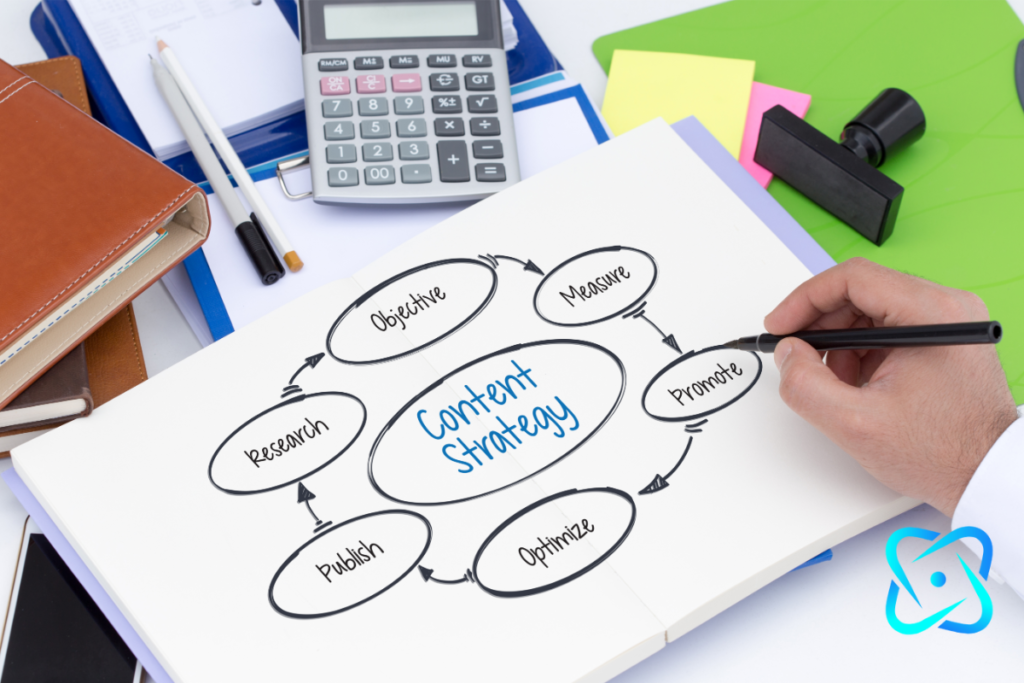Lead Generation Strategies for B2B Companies: What Works in 2025
In the ever-evolving landscape of B2B marketing, lead generation remains a cornerstone of business growth. As we delve into 2025, companies are increasingly seeking innovative strategies to attract and convert potential clients. This blog post explores effective lead generation techniques tailored for B2B companies, highlighting what works in the coming market.

The Importance of Lead Generation in B2B
For B2B companies, cultivating a steady stream of leads is not just beneficial—it’s essential. According to a report by HubSpot, 61% of marketers consider lead generation their number one challenge. With the B2B sales cycle being longer and more complex than B2C, it’s crucial to have a robust lead generation strategy in place to maintain a healthy sales pipeline.
Understanding the B2B Buyer’s Journey
Before diving into the strategies, it’s important to understand the B2B buyer’s journey. Typically, B2B buyers undergo a three-stage process: awareness, consideration, and decision. Tailoring content and outreach efforts to these stages can significantly enhance lead generation efforts.
Awareness Stage
In this initial phase, potential clients become aware of their problems and start looking for solutions. Your focus should be on providing educational content that highlights your expertise.
Consideration Stage
Here, prospects have clearly defined their problem and are actively researching solutions. Offer detailed content that differentiates your offerings from competitors.
Decision Stage
At this point, prospects are ready to choose a solution. Providing case studies, testimonials, and detailed product demos can tip the scales in your favor.
Top Lead Generation Strategies for 2025
1. Content Marketing and SEO
In the ever-evolving digital landscape, content marketing and SEO continue to be the backbone of any successful online strategy. As we look ahead to 2025, the emphasis on creating high-quality, keyword-rich content is more critical than ever. This year, we’re seeing a shift towards not just producing content, but creating diverse types of content that engage and resonate with audiences on multiple levels.
1. Long-Form Content:
Long-form content is instrumental in capturing the attention of your audience and search engines alike. Articles that delve deeply into topics provide comprehensive answers to user queries, which can significantly improve your SEO ranking. When creating long-form content, ensure that it’s well-researched and laden with naturally incorporated keywords. This helps in establishing your brand as an authority in your niche and improves your chances of appearing in search engine results pages (SERPs).
2. Embracing Video Content:

With the rise of platforms like YouTube and TikTok, video content has become a pivotal part of content marketing strategies. Videos are highly engaging and can convey complex information in a digestible format. To optimize video content for SEO, use descriptive titles and tags, and include transcripts for accessibility and keyword optimization. Creating how-to videos, product demonstrations, and customer testimonials can answer the pressing questions your audience has, further improving your content’s SEO potential.
3. Interactive Content:
Interactive content, such as quizzes, polls, and interactive infographics, can significantly boost user engagement. This type of content not only captures the attention of your audience but also encourages them to spend more time on your site, which is a positive signal to search engines. Incorporating interactive elements into your content strategy can lead to higher conversion rates and provide valuable insights into consumer preferences and behaviors.
4. Natural Keyword Integration:
Keywords remain a fundamental component of SEO, but their integration must be seamless and natural. Keyword stuffing is a thing of the past; today, the focus is on understanding the search intent behind keywords and weaving them organically into your content. Use a mix of short-tail and long-tail keywords, and consider voice search optimization as more people use digital assistants to find information online.
5. Addressing Audience Questions:
Understanding and addressing the questions and concerns of your target audience is crucial. Conduct thorough research to identify what your audience is searching for, and tailor your content to meet these needs. Tools like Google Trends and AnswerThePublic can offer insights into trending topics and frequently asked questions within your industry.
2. Account-Based Marketing (ABM)
In the B2B marketing landscape, Account-Based Marketing (ABM) has emerged as a game-changer, particularly when it comes to lead generation. By focusing on personalized marketing strategies tailored to specific accounts, businesses can foster stronger, more meaningful relationships with their prospects. But what exactly makes ABM so effective, and how can you leverage it to drive your B2B success? Let’s dive into the key elements that make ABM a must-have in your marketing toolkit.
1. Personalization at Its Core:
Unlike traditional marketing strategies that often take a one-size-fits-all approach, ABM zeroes in on individual accounts. This means crafting marketing messages that resonate with the unique needs and challenges of each target account. By addressing specific pain points and offering tailored solutions, ABM enables you to connect with decision-makers on a deeper level.
2. Data-Driven Targeting:
The success of ABM hinges on your ability to identify high-value accounts that are most likely to convert. Utilizing data analytics, you can gain insights into account behaviors, preferences, and buying patterns. This data-driven approach allows you to prioritize accounts that align with your business goals, ensuring that your marketing efforts are both efficient and effective.
3. Building Stronger Relationships:

ABM is not just about generating leads; it’s about cultivating long-term relationships. By continuously engaging with your targeted accounts through personalized content and communication, you build trust and loyalty. This relationship-centric focus can lead to increased retention rates and more opportunities for upselling and cross-selling.
3. Leveraging AI and Automation
Elite businesses are constantly on the lookout for ways to enhance efficiency and drive better results. One of the most promising avenues for achieving this is through leveraging Artificial Intelligence (AI) and automation in lead generation. By integrating these advanced technologies into your marketing strategy, you can significantly streamline your processes and improve the quality of your leads.
1. AI: The Brain Behind Predictive Analysis:
Artificial Intelligence has revolutionized the way businesses approach data. With AI, you can analyze vast amounts of customer data to gain valuable insights into customer behavior and preferences. This predictive analysis allows you to tailor your marketing strategies more effectively, ensuring that you are targeting the right audience with the right message. As AI continues to evolve, its ability to process and interpret data becomes increasingly sophisticated, helping businesses to stay ahead of the curve.
2. Automation: The Secret to Efficiency
While AI provides the brains, automation offers the brawn. Automation tools are designed to handle repetitive and time-consuming tasks, freeing up your sales team to focus on what they do best—nurturing leads and closing deals. From sending out personalized email campaigns to managing social media posts, automation ensures that your lead generation efforts are consistent and efficient, allowing you to reach more potential customers without stretching your resources thin.
3. Combining Forces for Maximum Impact
The true power of AI and automation lies in their combined use. By integrating AI-driven insights with automated processes, you can create a highly effective lead generation machine. For instance, AI can identify potential leads based on their online behavior, while automation tools can immediately follow up with personalized communications. This seamless integration not only enhances the customer experience but also increases the likelihood of converting leads into loyal customers.
4. Social Media and LinkedIn
Social media platforms continue to be indispensable tools for B2B marketing. Among these platforms, LinkedIn stands out as a powerhouse, offering unparalleled opportunities for businesses to connect with industry leaders, share valuable insights, and engage with potential clients. Let’s dive deeper into how LinkedIn and other social media platforms can be effectively utilized for B2B marketing.

Leveraging LinkedIn for B2B Success
1. Sharing Thought Leadership Content
LinkedIn is the ideal platform for establishing your business as a thought leader in your industry. By consistently sharing insightful articles, whitepapers, and case studies, you can position your brand as a trusted source of information. Use LinkedIn’s publishing platform to write long-form posts that delve into industry trends, challenges, and solutions. This not only boosts your visibility but also builds credibility among your peers and potential clients.
2. Participating in Industry Discussions
Engagement is key on LinkedIn. Actively participate in discussions within LinkedIn groups related to your industry. These groups are a goldmine for networking and sharing expertise. By contributing thoughtful comments and insights, you can forge relationships with other professionals and establish your authority in your field.
3. Engaging with Potential Leads
LinkedIn’s advanced search and filtering options allow you to identify and connect with potential leads effortlessly. Personalize your connection requests and engage with your network by commenting on their posts, sharing relevant content, and congratulating them on their achievements. This personalized approach fosters meaningful relationships, paving the way for future business opportunities.
Expanding Reach with Twitter and Facebook
While LinkedIn is a leader in B2B marketing, platforms like Twitter and Facebook also hold significant potential for generating leads and expanding your reach.
1. Utilizing Targeted Ads

Both Twitter and Facebook offer sophisticated advertising options that allow businesses to target specific demographics and industries. By creating tailored ad campaigns, you can reach decision-makers and influencers in your target market. Use compelling visuals and clear calls-to-action to drive engagement and conversions.
2. Creating Engaging Content
Content is king on social media. Craft engaging posts that resonate with your audience, whether it’s through informative infographics, engaging videos, or interactive polls. Consistently sharing valuable content not only keeps your brand top of mind but also encourages shares and interactions, amplifying your reach.
3. Building Community and Trust
Social media is not just about broadcasting messages; it’s about building community. Engage with your audience by responding to comments, retweeting user-generated content, and creating discussions around industry topics. A strong, engaged community enhances brand loyalty and trust, which are crucial in B2B relationships.
Case Studies and Success Stories
Real-world examples can provide valuable insights into what works in lead generation. Consider the case of Company X, which increased its lead generation by 40% within a year by implementing a comprehensive content marketing strategy combined with ABM.
Actionable Tips for Implementing Lead Generation Strategies
Set Clear Goals
Before implementing any strategy, define clear and measurable goals. Whether it’s increasing website traffic, generating more qualified leads, or improving conversion rates, having specific objectives will guide your efforts.

Continuously Analyze and Optimize
Regularly analyze the performance of your lead generation strategies. Use tools like Google Analytics and CRM software to track metrics and identify areas for improvement. Optimization should be an ongoing process.
Invest in Training and Development
Ensure your marketing and sales teams are equipped with the latest skills and knowledge. Invest in training programs that focus on new technologies, customer engagement techniques, and data-driven decision-making.
Conclusion
In 2025, successful B2B lead generation hinges on understanding the buyer’s journey, leveraging technology, and personalizing marketing efforts. By implementing the strategies outlined in this post, B2B companies can enhance their lead generation efforts, driving growth and success in an increasingly competitive market.



